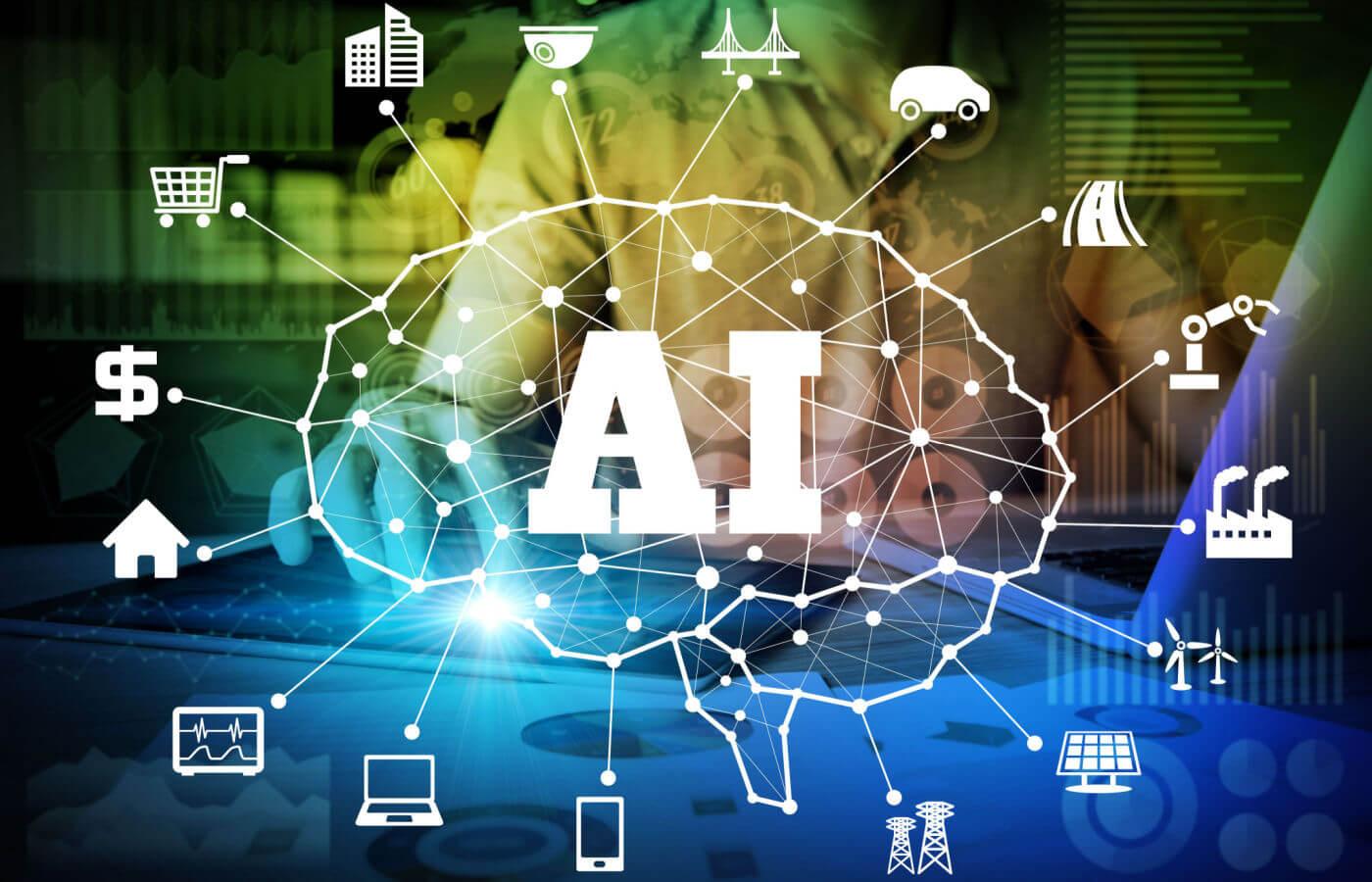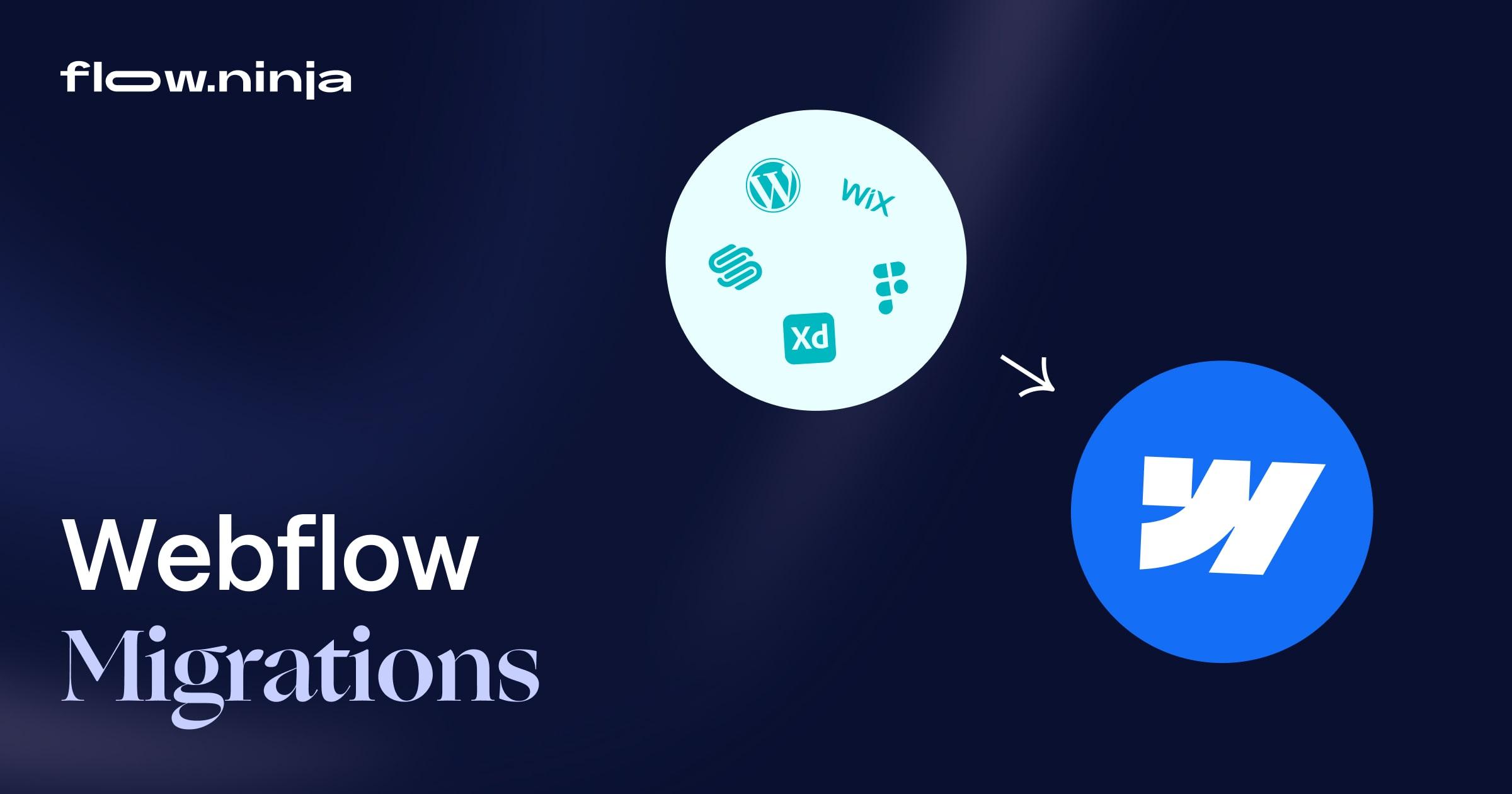In today’s fast-paced business landscape, where change is the only constant, the ability to turn ideas into action is more critical than ever. Enter Artificial Intelligence (AI) — a game-changer that’s not just a buzzword but a powerful tool reshaping the way we do business. Imagine having a partner that can analyze vast amounts of data in seconds,predict customer needs before they even arise,and streamline operations to boost efficiency. Sounds like something out of a sci-fi movie, right? But it’s happening right now, and businesses that harness the power of AI are not just surviving; they’re thriving. In this article, we’ll explore how AI is transforming ideas into actionable strategies, helping companies innovate, enhance productivity, and ultimately elevate thier game in a competitive world. So, if you’re ready to see how AI can revolutionize your business approach, let’s dive in!
Exploring the Transformative Power of AI in Business
Artificial Intelligence is not just a buzzword; it’s a catalyst for change that is reshaping the business landscape. Companies that embrace AI are discovering innovative ways to streamline operations,enhance customer experiences,and ultimately increase profits. The integration of AI technologies allows businesses to harness data in ways that where previously unimaginable, turning raw data into actionable insights.
One of the most significant advantages of AI in business is its ability to automate routine tasks, freeing up valuable time and resources. By implementing AI-driven solutions, organizations can:
- Reduce operational costs
- Minimize human error
- Enhance productivity through automation
Moreover, AI enhances decision-making processes by providing real-time analytics and predictive insights. This data-driven approach allows businesses to make informed choices quickly, adapting to market changes and consumer preferences. For example, AI algorithms can analyze customer behavior patterns, enabling companies to tailor their marketing strategies to meet specific needs, thereby boosting engagement and sales.
Consider the impact of AI on customer service. Chatbots and virtual assistants are revolutionizing the way businesses interact with clients. They provide instant support, handle multiple queries simultaneously, and ensure that customers have a seamless experience. This implementation not only enhances customer satisfaction but also allows human agents to focus on more complex issues, improving efficiency and service quality.
| AI Applications | Benefits |
|---|---|
| Predictive Analytics | Informed decision-making |
| Chatbots | 24/7 customer support |
| Supply Chain Optimization | Cost reduction and efficiency |
Incorporating AI into business strategies doesn’t just enhance internal operations; it also fosters innovation. Companies can leverage machine learning and advanced algorithms to develop new products and services that meet the evolving demands of consumers. By embracing this technology, businesses position themselves at the forefront of their industries, ready to seize new opportunities as they arise.
Unlocking innovation: How AI Fuels creative Solutions
Artificial Intelligence is not just a technological advancement; it’s a catalyst for creativity that empowers businesses to transform abstract ideas into tangible results. By leveraging AI, organizations can uncover insights and opportunities that were previously hidden, paving the way for innovative solutions and creative strategies.
One of the most compelling aspects of AI is its ability to analyze vast amounts of data at lightning speed. This capability allows businesses to identify trends and patterns that inform decision-making. As a notable example, AI tools can sift through customer feedback and market analytics to provide actionable insights, helping companies tailor their products and services to better meet consumer needs. Here are some ways AI enhances creative problem-solving:
- Enhanced Data Analysis: AI algorithms can process and interpret complex datasets, revealing insights that human analysis might miss.
- Predictive Modeling: businesses can use AI to forecast market trends and consumer behavior,enabling proactive strategies.
- Personalization: AI allows for personalized marketing strategies,creating tailored experiences that resonate with individual customers.
- Rapid Prototyping: AI-driven simulations enable companies to test ideas and concepts quickly,reducing the time from ideation to execution.
Moreover, AI fosters collaboration and creativity among teams. By automating mundane tasks, employees can focus on high-value activities that require human ingenuity. AI-powered tools, such as collaborative platforms and creative software, enhance brainstorming sessions and allow for a more efficient workflow. Consider the following table that summarizes how AI can streamline processes:
| Traditional Process | AI-Enhanced Process |
|---|---|
| Manual data entry and analysis | Automated data insights generation |
| Long feedback loops | Real-time customer feedback integration |
| Static marketing strategies | Dynamic,AI-driven campaigns |
| Rigid product development cycles | Agile prototyping with AI simulations |
As AI continues to evolve,so will its role in fostering innovation within businesses. Companies that embrace AI will not only improve their operational efficiency but also tap into a wellspring of creativity that drives sustained growth. The future is radiant for organizations willing to harness the power of artificial intelligence as a key player in their strategic toolkit.
Enhancing Decision-making with Data-Driven Insights
In today’s fast-paced business habitat, the ability to make informed decisions quickly is crucial for success. Artificial intelligence (AI) empowers organizations by transforming raw data into actionable insights that drive strategic initiatives.By leveraging advanced analytics and machine learning algorithms, businesses can uncover patterns and trends that were previously hidden, enabling them to make decisions based on solid evidence rather than intuition alone.
imagine having access to real-time data analytics that can predict customer behavior,optimize supply chains,and enhance product offerings. AI tools can process vast amounts of information at lightning speed, providing business leaders with critical insights that inform their strategies. Some of the key advantages include:
- Improved Accuracy: AI reduces human error, leading to more precise forecasts and analyses.
- Faster Decision-Making: Automated insights allow for quicker reactions to market changes.
- Personalized Experiences: Tailored recommendations enhance customer satisfaction and loyalty.
To illustrate the impact of AI on decision-making, consider the following table showcasing how various industries utilize data-driven insights:
| Industry | Submission | Benefit |
|---|---|---|
| Retail | customer Behavior Analysis | Increased Sales Through Targeted Marketing |
| Finance | Fraud Detection | Reduced Risk and Losses |
| Healthcare | predictive Analytics | Improved Patient outcomes |
| manufacturing | Predictive Maintenance | Minimized Downtime and Costs |
Moreover, organizations can leverage AI to conduct scenario analyses, projecting the potential outcomes of various strategic choices. This capability allows businesses to weigh the pros and cons of different paths and select the most promising options. The use of AI not only enhances the decision-making process but also cultivates a culture of innovation, encouraging teams to explore new ideas backed by data.
Ultimately, integrating AI into decision-making processes transforms the way businesses operate. Companies that harness the power of data-driven insights not only gain a competitive edge but also foster a more agile and responsive organizational structure.by turning ideas into action through informed decisions, businesses can unlock their full potential and navigate the complexities of the modern marketplace with confidence.
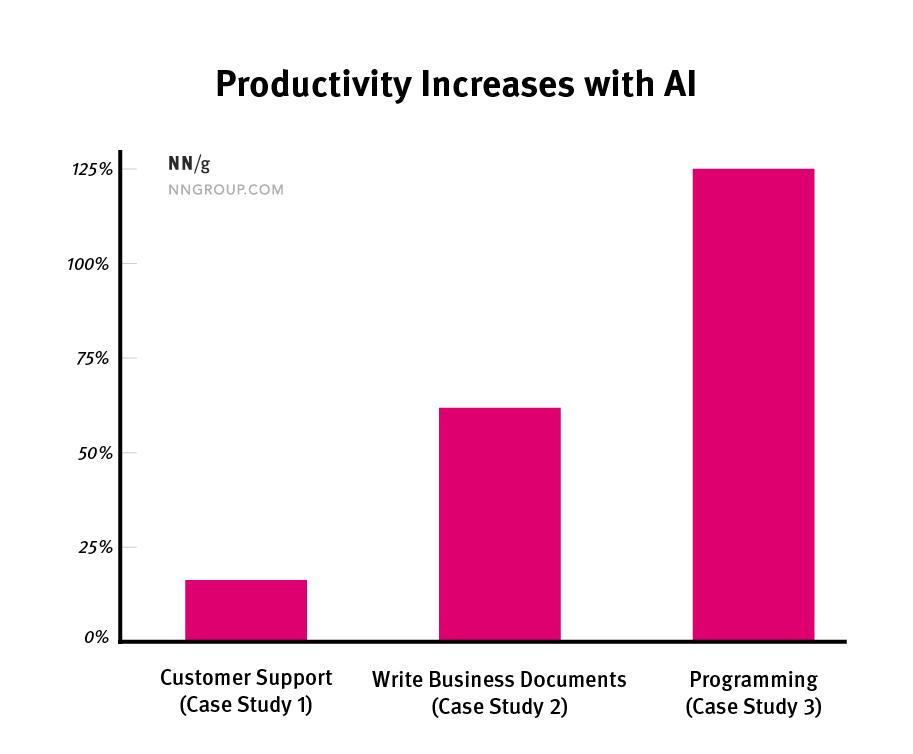
Streamlining operations: AI as your Efficiency Partner
In the fast-paced world of business, the quest for efficiency has never been more crucial. Artificial Intelligence (AI) is proving to be an indispensable ally in this pursuit. By automating mundane tasks and providing insightful analytics,AI enables teams to focus on what truly matters—driving innovation and growth.
Here are several ways AI can transform your operations:
- Process Automation: AI tools can handle repetitive tasks, such as data entry and report generation, freeing up valuable time for your workforce.
- Data Analysis: With advanced algorithms, AI can analyze vast amounts of data to uncover trends and insights that would take humans much longer to discover.
- Customer Insights: AI-driven analytics help businesses understand customer behavior, allowing for personalized marketing strategies that resonate with target audiences.
- Supply Chain Optimization: AI can predict demand fluctuations and optimize inventory management, leading to significant cost savings.
moreover, the adaptability of AI technologies means they can be tailored to fit specific business needs.Whether you’re a startup or an established corporation, integrating AI solutions into your operations can result in a competitive edge. Consider the following table that outlines common AI applications and their benefits:
| AI Application | Benefit |
|---|---|
| Chatbots | 24/7 customer support and engagement |
| Predictive Analytics | Informed decision-making based on data trends |
| Robotic Process Automation | Increased efficiency and accuracy in routine tasks |
| Personalization Engines | Enhanced customer experience through tailored content |
By leveraging these capabilities, businesses can streamline operations and create an agile workplace that adapts to market changes. The challenge lies in implementing AI strategically, ensuring it complements your existing processes rather than complicates them. A well-thought-out AI strategy can transform data into actionable insights,ultimately leading to smarter operations and increased profitability.
As you consider the next steps in your operational strategy, think of AI not just as a tool, but as a partner in your journey toward efficiency. Embracing this technology opens up a world of possibilities, allowing your team to elevate their focus from the mundane to the remarkable.
Personalizing Customer Experiences Through Intelligent Automation
In today’s fast-paced digital landscape, businesses are constantly seeking ways to connect with customers on a deeper level. Intelligent automation has emerged as a key player in this endeavor, enabling companies to tailor experiences that resonate with individual preferences. By harnessing AI-driven insights,businesses can foster more meaningful interactions,ultimately driving customer loyalty and satisfaction.
one of the most significant benefits of intelligent automation lies in its ability to analyze vast amounts of data in real-time.This capability allows organizations to:
- Anticipate customer needs: By understanding behavior patterns, businesses can predict what customers are likely to want next.
- Personalize communications: Automated systems can send targeted messages based on previous interactions, ensuring that the customer feels valued and understood.
- Enhance service delivery: Automated responses can be tailored to provide solutions that meet specific customer inquiries, reducing wait times and improving satisfaction.
Moreover, with the integration of AI, companies can segment their customer base more effectively.This segmentation allows for customized marketing strategies that speak directly to the interests of different groups. Consider the following example:
| Customer Segment | Preferred Content Type | ideal Interaction Channel |
|---|---|---|
| Millennials | Video Tutorials | Social Media |
| Gen X | Email Newsletters | |
| Baby Boomers | In-Depth Articles | Websites |
By understanding the unique preferences of each segment, businesses can create targeted campaigns that not only reach but also engage customers effectively. These personalized experiences result in higher conversion rates and reinforce brand loyalty, as customers are more likely to return to a brand that understands their needs.
the synergy of intelligent automation and customer experience personalization is not just about improving metrics; it’s about creating a relationship built on trust and understanding. Companies that leverage these technologies are not merely selling products; they are building communities that resonate with their audience. This approach is essential for businesses seeking to thrive in an increasingly competitive marketplace.

harnessing AI for Competitive Advantage in the Market
In the fast-paced world of business,leveraging the power of artificial intelligence has become a game changer. Companies are recognizing that to stay ahead in a competitive market, they must not only adopt new technologies but also integrate AI into their core strategies. This shift allows businesses to enhance decision-making processes, optimize operations, and deliver personalized customer experiences.
Embracing AI technologies offers various advantages:
- Data-Driven Insights: AI systems can analyze vast amounts of data quickly, revealing patterns and trends that inform strategic decisions.
- Enhanced Efficiency: Automation of repetitive tasks frees up human resources for more creative and strategic endeavors.
- Personalized Customer Engagement: AI enables businesses to tailor their services and products, creating a more engaging customer journey.
- Predictive Analytics: Anticipating market shifts and customer needs allows companies to stay agile and responsive.
One of the most compelling aspects of AI is its ability to streamline operations. As an example,AI-driven supply chain management systems can predict inventory levels and optimize logistics,reducing costs and improving service delivery. This not only enhances operational efficiency but also leads to a better allocation of resources. Companies employing these intelligent systems report significant improvements in productivity and a measurable boost to their bottom line.
Moreover, the integration of AI into customer service has revolutionized how businesses interact with their clients. Chatbots and virtual assistants provide immediate support, resolving issues at any hour of the day. By effectively managing customer inquiries, businesses can enhance satisfaction and build loyalty while reducing the burden on human staff.
Ultimately, the adoption of AI is not just about technology; it’s about fostering a culture of innovation. Companies that embrace AI as a core element of their strategy are not only preparing for the future but are also creating an environment where creativity and technology coexist to drive progress.
| AI Application | Business Benefit |
|---|---|
| Predictive Analytics | Informed decision-making |
| Automation | Increased efficiency |
| Personalization | Improved customer loyalty |
| chatbots | 24/7 customer support |

Building a Future-Ready Workforce: Skills for an AI Era
As we transition into an era dominated by artificial intelligence, businesses must recognize the importance of equipping their workforce with the right skills.Adaptability and continuous learning are no longer optional; they are imperative. In an age where AI can perform tasks that once required a human touch, employees must be ready to embrace change and enhance their skill sets regularly.
To thrive in this new landscape, individuals should focus on a blend of technical skills and soft skills. The following competencies will be crucial:
- Data Literacy: Understanding and interpreting data is essential for making informed decisions.
- AI Proficiency: Familiarity with AI tools and platforms will enable employees to leverage technology effectively.
- Collaboration Skills: Working seamlessly in diverse teams, often comprising both humans and AI, is vital.
- Critical Thinking: The ability to analyze problems and generate innovative solutions will set individuals apart.
organizations should also prioritize creating a culture of lifelong learning. This means investing in training programs that encourage employees to explore emerging technologies. A strategic approach includes pairing traditional learning methods with practical applications,such as:
| Learning Method | Description |
|---|---|
| Workshops | Hands-on sessions focused on specific AI tools or concepts. |
| Online Courses | Flexible learning opportunities covering a range of AI-related topics. |
| Mentorship Programs | Pairing experienced professionals with those looking to grow their AI skills. |
moreover, fostering an environment that encourages experimentation can empower employees to take ownership of their learning journey. by implementing initiatives such as hackathons or innovation challenges,companies can spark creativity and collaboration,ultimately leading to more effective AI integration within business processes.
Lastly,leadership plays a pivotal role in this transformation. Leaders must champion a vision that emphasizes the importance of AI and the skills necessary to navigate its complexities. By establishing clear pathways for skill development and cultivating an inclusive culture, organizations can build a future-ready workforce that not only meets the demands of today but also anticipates the challenges of tomorrow.
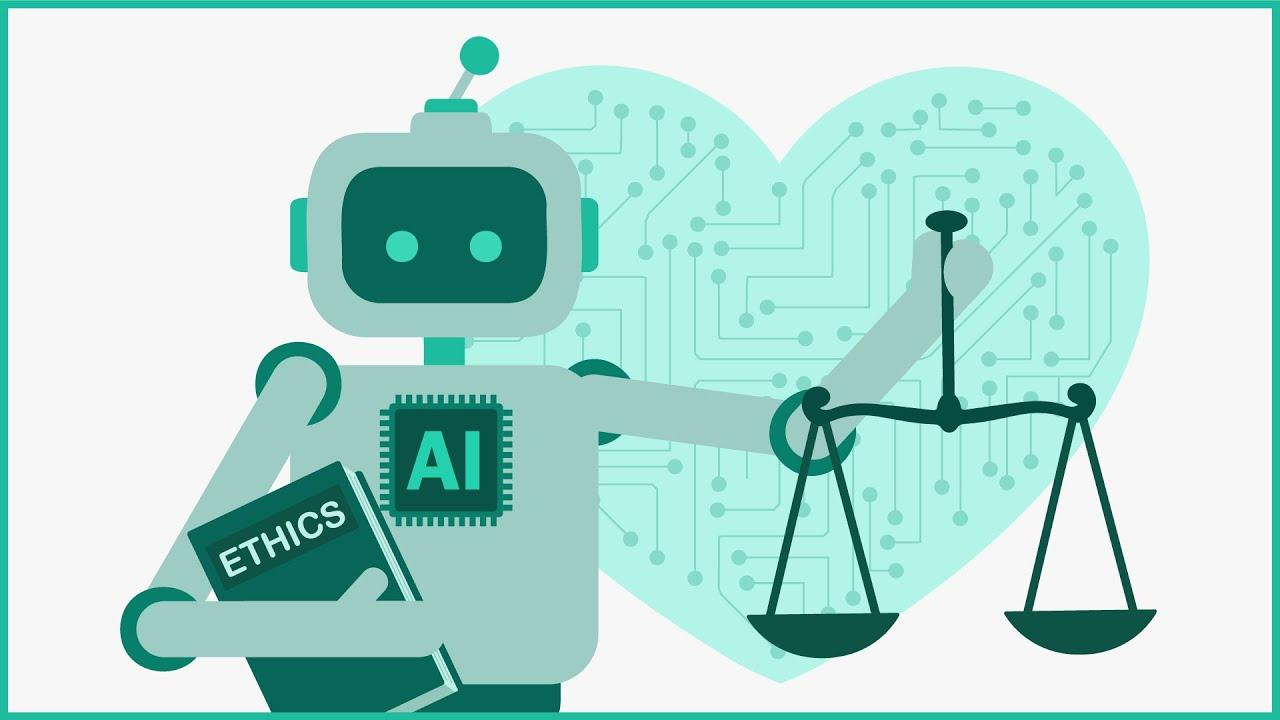
navigating Ethical Considerations in AI implementation
As businesses increasingly harness the power of artificial intelligence, it’s crucial to address the ethical implications that come along with these advancements. while the potential for innovation and efficiency is vast, the foundation of these technologies must be built on a strong ethical framework to prevent harm and promote fairness.
First and foremost, transparency is vital in AI deployments. Stakeholders must be informed about how AI systems operate,including the algorithms and data used. This transparency fosters trust and allows for informed decision-making. Consider implementing the following strategies to enhance transparency:
- Document AI decision-making processes: Clearly outline how decisions are made by AI systems.
- Regular audits: Conduct ongoing assessments to ensure compliance with ethical standards.
- Engage with diverse stakeholders: Collaborate with various groups to gain insights and feedback.
moreover,the issue of bias in AI cannot be overlooked. Algorithms must be trained on diverse datasets to avoid perpetuating existing inequalities.Businesses should actively seek to:
- Diverse data collection: Gather data from a wide range of demographics to ensure inclusivity.
- Implement bias detection tools: Utilize software that can identify and rectify biases within AI models.
- Promote diversity in teams: A diverse workforce can provide varied perspectives that help mitigate bias.
privacy considerations are paramount. consumers are becoming increasingly aware of how their data is used, and businesses must prioritize data protection. Here are some essential practices to uphold user privacy:
- Adopt data minimization principles: Only collect the data that is absolutely necessary.
- Ensure secure data handling: Implement strong encryption and access controls to safeguard sensitive information.
- be transparent about data use: Clearly communicate to users how their data will be utilized and stored.
By proactively addressing these ethical considerations, businesses can not only enhance the effectiveness of their AI strategies but also build a positive reputation and foster long-term relationships with their customers and stakeholders.
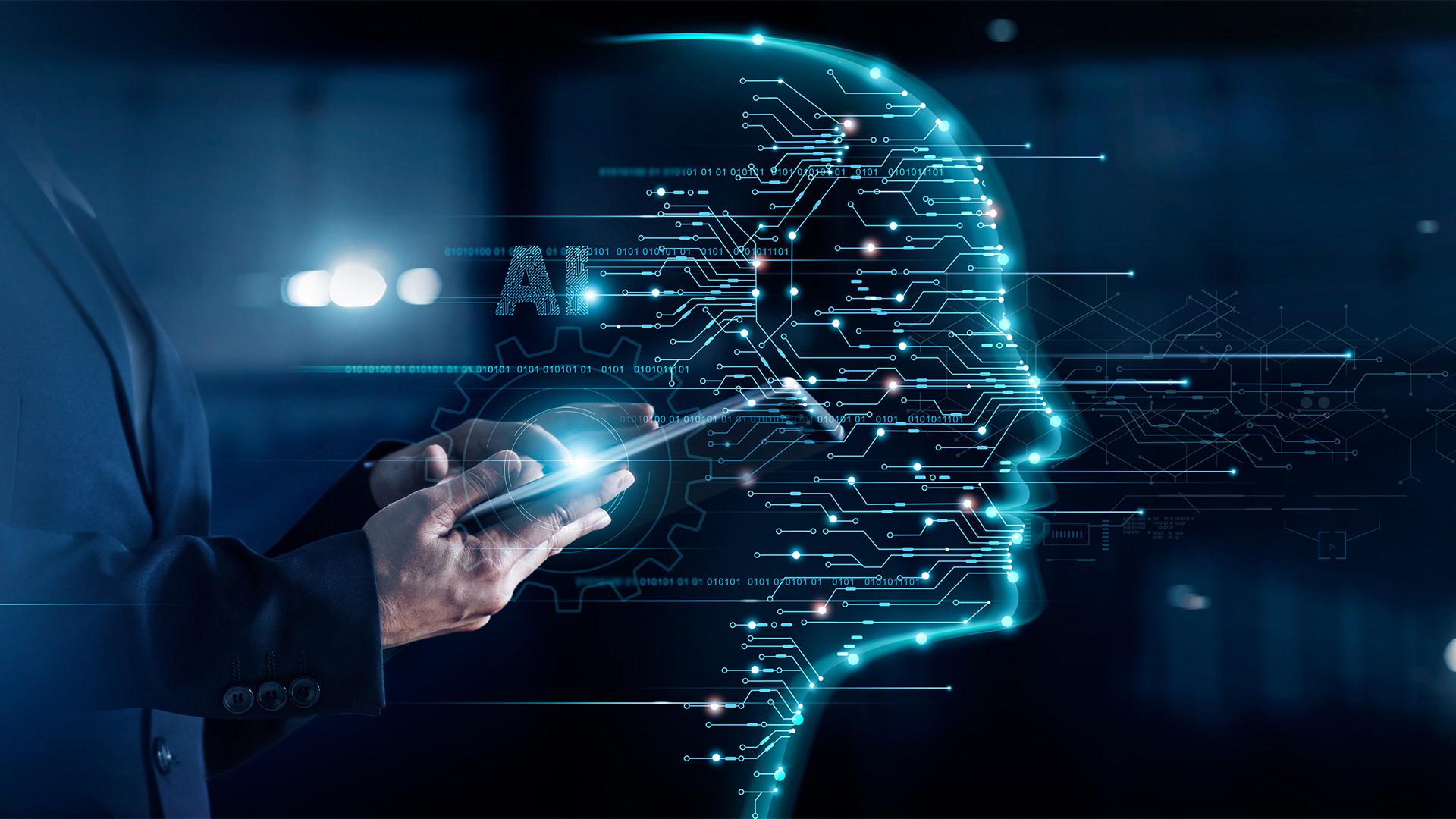
Measuring Success: Key Metrics for AI Integration
In today’s fast-paced digital landscape, integrating artificial intelligence into business operations is no longer just an option; it’s a necessity.however, as organizations embark on this transformative journey, understanding how to measure success becomes critical. Here are some key metrics that can help evaluate the effectiveness of AI integration:
- Return on Investment (ROI): Calculating the ROI of AI initiatives provides a clear picture of financial benefits versus the costs associated with implementation. This metric can guide future investment decisions.
- Operational Efficiency: Metrics such as reduced processing time and increased throughput illustrate how AI can streamline operations, leading to significant time and cost savings.
- Customer Engagement: Tracking metrics like customer satisfaction scores and engagement rates before and after AI implementation can showcase the technology’s impact on user experience.
- Data Accuracy: Evaluating improvements in data quality and decision-making accuracy is essential for understanding AI’s effectiveness in aiding business strategies.
Moreover, organizations can benefit from deploying advanced analytics tools to continuously monitor these key metrics. With the right dashboarding solutions, they can visualize performance in real-time, allowing for swift adjustments and optimizations. Here’s how businesses can track their progress:
| Metric | Before AI | After AI |
|---|---|---|
| Customer Satisfaction Score | 75% | 90% |
| Processing Time (hours) | 48 | 12 |
| Data Accuracy Rate | 80% | 95% |
Ultimately, the real measure of success lies in the alignment of AI initiatives with broader business goals. By establishing clear objectives and relevant KPIs, organizations can ensure that their AI strategies not only drive immediate results but also foster long-term growth and innovation. As you embark on your AI journey, keep these metrics at the forefront to navigate the evolving landscape effectively.
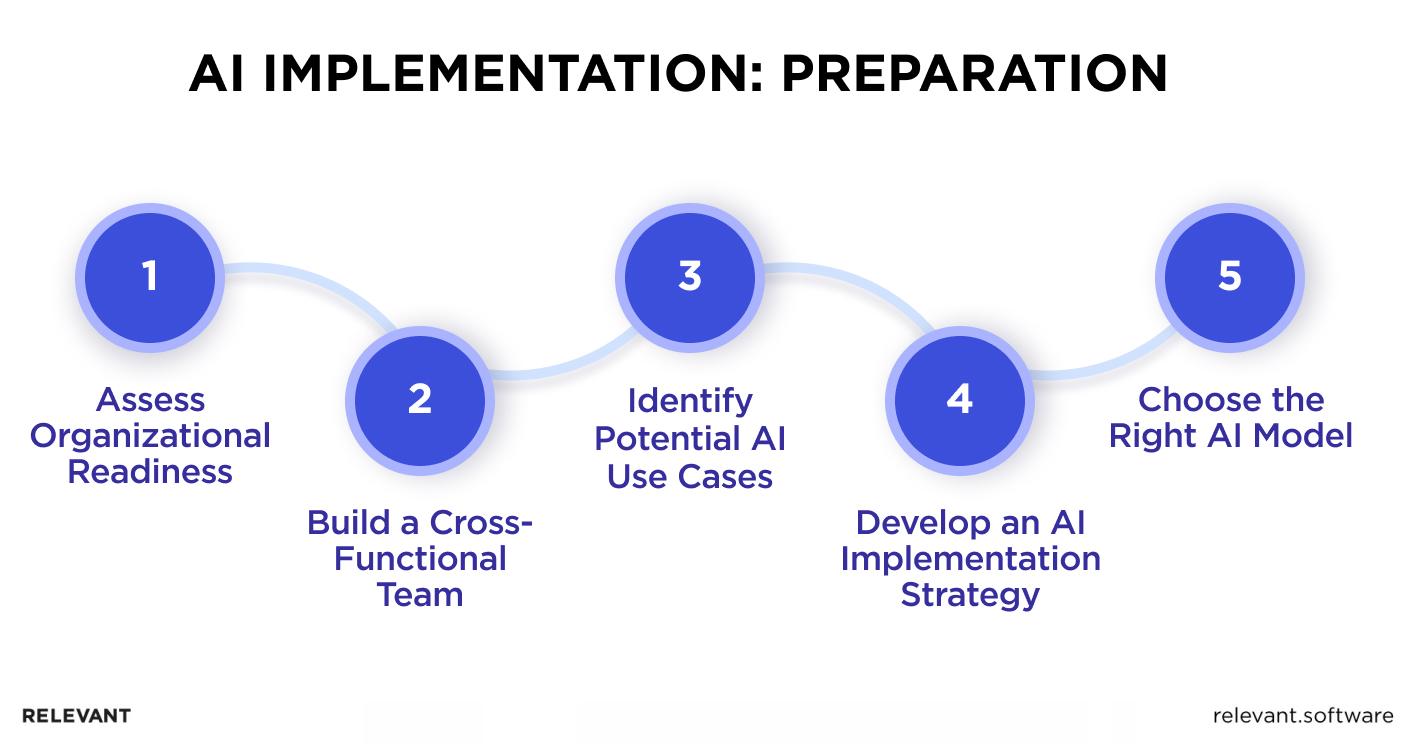
Taking the Leap: Practical Steps to Implement AI in Your Business
Integrating artificial intelligence into your business can feel like a daunting task, but with the right approach, it can become an exhilarating journey.start by identifying specific areas in your operations that could benefit from AI. Whether it’s enhancing customer service through chatbots, automating data analysis, or improving marketing strategies, pinpointing these opportunities is crucial. Here are some key steps to guide you:
- Assess Your Needs: Take a close look at your current processes and ask yourself where inefficiencies lie.
- Research AI Solutions: Explore various AI technologies that align with your identified needs, from machine learning algorithms to natural language processing tools.
- Develop a Strategy: Create a clear plan of action that outlines how you will integrate AI into your existing systems.
- Start Small: Choose a pilot project to test AI implementation on a smaller scale before a full rollout.
- Measure Success: establish metrics to evaluate the effectiveness of your AI initiatives, allowing for adjustments as needed.
Collaboration is key when it comes to successfully implementing AI. Involve your team early in the process to foster a culture ready for innovation. Host workshops or brainstorming sessions to encourage ideas from all levels of your organization. This not only increases buy-in but also allows you to tap into diverse perspectives that can enhance your approach.
Investing in training is another critical aspect. Your team will need to understand how to work alongside AI tools effectively. Consider offering courses or workshops to help them gain the necessary skills. This empowers employees and ensures that they are not intimidated by the new technology but rather see it as an ally in their daily tasks.
| AI Technology | Business Application | Benefits |
|---|---|---|
| Chatbots | Customer Service | 24/7 support,faster response times |
| Predictive Analytics | Marketing | Targeted campaigns,increased ROI |
| Machine Learning | Data Processing | Automated insights,efficiency |
Ultimately,transitioning to an AI-driven business model isn’t just about technology—it’s about cultivating a mindset that embraces change. Celebrate small wins as you implement these technologies and encourage your team to share their progress and success stories. this positivity will create momentum and help your organization thrive in an increasingly AI-centric marketplace.
Frequently Asked Questions (FAQ)
Q&A: From Ideas to Action: How Artificial Intelligence Elevates the World of Business
Q1: What exactly is artificial intelligence, and why is it vital for businesses today?
A1: Grate question! At its core, artificial intelligence (AI) refers to the simulation of human intelligence in machines that are programmed to think and learn. It’s important for businesses because it enables them to automate processes, make data-driven decisions, and enhance customer experiences. Imagine being able to predict customer behavior or streamline operations with just a click—that’s the magic of AI!
Q2: Can you provide some examples of how AI is currently being used in businesses?
A2: Absolutely! Many companies are leveraging AI in various ways. As an example, retailers use AI for personalized recommendations, like when you get product suggestions based on your previous purchases. in finance, firms utilize AI to detect fraud by analyzing transaction patterns in real time. Even in healthcare, AI assists in diagnosing diseases by analyzing medical images. The possibilities are truly vast!
Q3: What are the biggest benefits of integrating AI into business operations?
A3: The benefits are significant! First, AI can dramatically increase efficiency by automating routine tasks, freeing up employees to focus on more strategic initiatives. second, it enhances decision-making processes by providing valuable insights from data analysis. Lastly, businesses can improve customer satisfaction through personalized interactions. it’s about working smarter, not harder!
Q4: Some people are nervous about AI taking jobs. How do you respond to those concerns?
A4: It’s a valid concern, but it’s essential to view AI as a tool that complements human efforts rather than replaces them. While AI can automate repetitive tasks, it also creates new job opportunities in AI management, data analysis, and strategy development. The key is for businesses to invest in reskilling their workforce so that employees can thrive alongside AI technologies.
Q5: What should businesses consider before implementing AI solutions?
A5: Before diving into AI, businesses should assess their specific needs and objectives.What problems do you want to solve? additionally, it’s crucial to have quality data to train AI systems effectively. Companies should also consider the ethical implications of AI, ensuring transparency and fairness in how it’s applied. Planning and strategy are key to a successful AI implementation!
Q6: How do you envision the future of AI in business?
A6: The future of AI in business is incredibly exciting! I envision a landscape where AI truly becomes a strategic partner, providing real-time insights and enabling innovative approaches to customer engagement. As technology evolves, we’ll see even more complex AI solutions that can adapt to the ever-changing business environment. The potential for growth and transformation is limitless!
Q7: Any final thoughts for businesses interested in adopting AI?
A7: Embrace the change! AI isn’t just a trend; it’s a revolution in how we do business. Start small, educate your team, and gradually incorporate AI into your operations. Remember, the goal is to enhance human capabilities—not replace them. by taking action now, you position your business to thrive in the digital age. The future is bright for those who dare to innovate!
In Retrospect
As we wrap up our exploration of how artificial intelligence is transforming the business landscape, it’s clear that we’re just scratching the surface of what’s possible. The journey from ideas to action is not just a trend; it’s a revolution that’s reshaping how we think, work, and innovate.
By leveraging AI, businesses are not only enhancing efficiency but also unlocking new levels of creativity and insight. Whether you’re a seasoned entrepreneur or just starting out, embracing these technologies can propel your business forward in ways you never thought possible.
So, what’s stopping you? The tools and resources are at your fingertips, ready to elevate your business to new heights. Dive in, experiment, and let the power of AI turn your bold ideas into impactful actions. The future is here, and it’s brimming with potential—are you ready to seize it?

